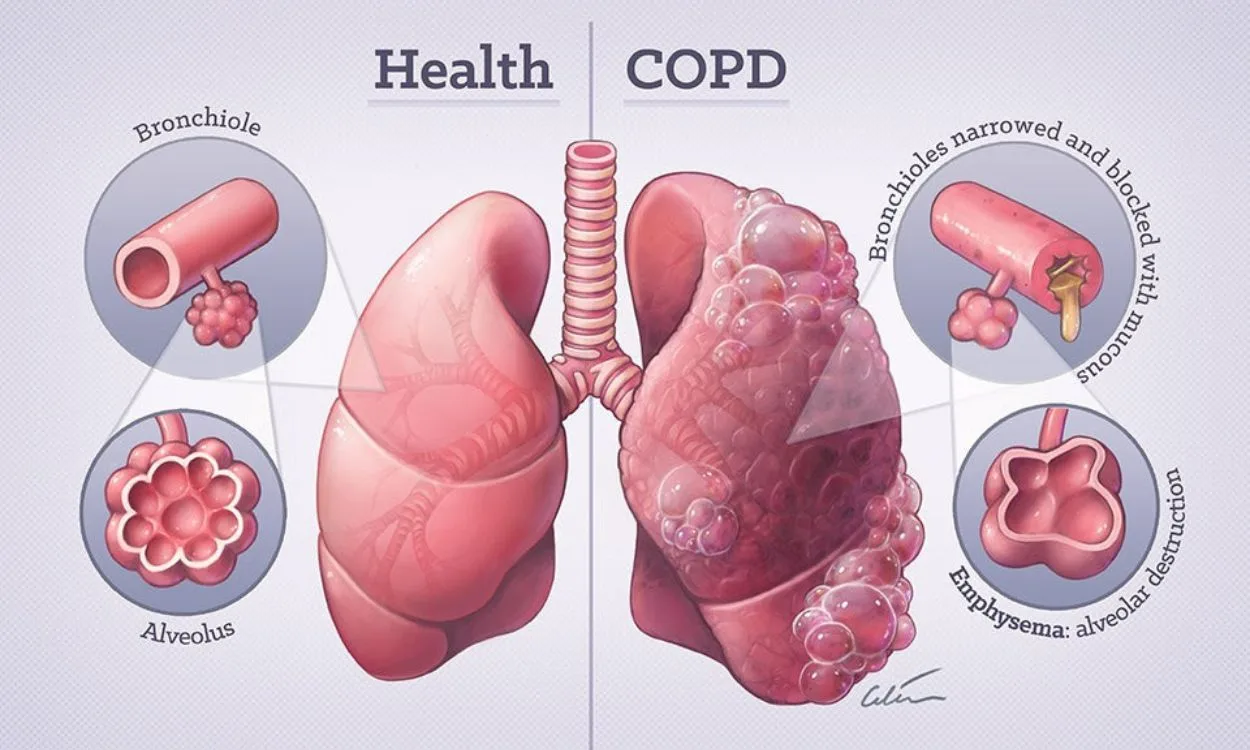Chronic Obstructive Pulmonary Disease (COPD) is a serious and progressive lung condition that affects millions of people worldwide. It is a leading cause of disability and death, making it crucial to understand the disease, its causes, symptoms, diagnosis, and treatment. In this comprehensive guide, we will delve into the details of COPD to provide you with a better understanding of this condition.
What is COPD?
COPD is a term used to describe a group of chronic lung conditions that cause airflow obstruction, making it difficult to breathe. The two most common conditions that fall under the COPD umbrella are chronic bronchitis and emphysema. These conditions often coexist in individuals, and their symptoms can overlap.
Causes of COPD:
Smoking:
Cigarette smoking is the primary cause of COPD. It's estimated that around 80-90% of COPD cases are related to smoking. The harmful chemicals in tobacco smoke can lead to inflammation and damage in the airways and air sacs of the lungs.
Environmental Factors:
Long-term exposure to environmental pollutants, such as dust, chemical fumes, and air pollution, can contribute to the development of COPD. Occupational exposure to these hazards can also increase the risk.
Genetics:
In some cases, genetic factors can predispose individuals to COPD. Alpha-1 antitrypsin deficiency is a rare genetic condition that can lead to the development of COPD in non-smokers.
Symptoms of COPD:
The symptoms of COPD can vary in severity, and they often worsen over time.
Common symptoms include:
Shortness of breath:
Often the most noticeable symptom, it can occur during physical activity or even at rest as the disease progresses.
Chronic cough: A persistent cough that may produce mucus.
Increased mucus production: Over time, COPD can lead to increased mucus production, which can contribute to coughing and breathing difficulties.
Wheezing: Wheezing is a high-pitched whistling sound that occurs when breathing, especially during exhalation. Chest tightness: A feeling of tightness or pressure in the chest may be present, making it uncomfortable to breathe.
Diagnosis:
COPD is diagnosed through a combination of medical history, physical examination, and various tests. Some common diagnostic tools include:
Spirometry: This lung function test measures how much air you can exhale and how quickly. It is a key test for diagnosing COPD.
Chest X-rays: These images can help detect lung changes associated with COPD and rule out other conditions.
CT scans: Computed tomography (CT) scans provide detailed images of the lungs and can help identify emphysema or other lung conditions.
Arterial blood gas analysis: This test measures the oxygen and carbon dioxide levels in your blood to assess the severity of your condition.
Pulmonary function tests: These tests assess how well your lungs are functioning, including how effectively you can move air in and out of your lungs.
Treatment:
While there is no cure for COPD, there are various treatment options available to manage symptoms and improve the quality of life for individuals with the condition.
Lifestyle Modifications: Quitting smoking is the most important step in managing COPD. Avoiding exposure to environmental pollutants and maintaining a healthy lifestyle through regular exercise and a balanced diet can also help.
Medications: Bronchodilators and inhaled corticosteroids are commonly prescribed to help open the airways and reduce inflammation in the lungs.
Oxygen Therapy: For individuals with severe COPD, supplemental oxygen may be necessary to ensure the body receives enough oxygen.
Pulmonary Rehabilitation: This structured program includes exercise, education, and support to improve the physical and emotional well-being of individuals with COPD.
Surgery: In some cases, surgery may be considered. Lung volume reduction surgery and lung transplantation are options for those with advanced COPD.
Vaccinations: Getting vaccinated against the flu and pneumonia is important for individuals with COPD, as respiratory infections can worsen the condition.
In conclusion,
COPD is a progressive lung disease that primarily affects individuals who smoke or have been exposed to environmental pollutants. It is characterized by symptoms such as shortness of breath, chronic cough, and wheezing.
Early diagnosis and appropriate management can help improve the quality of life for those living with COPD. It's essential to seek medical attention if you or a loved one experience any of the symptoms mentioned and to follow a treatment plan prescribed by a healthcare professional.
Additionally, taking steps to prevent COPD, such as avoiding smoking and environmental toxins, is crucial in reducing the risk of developing this debilitating condition.
